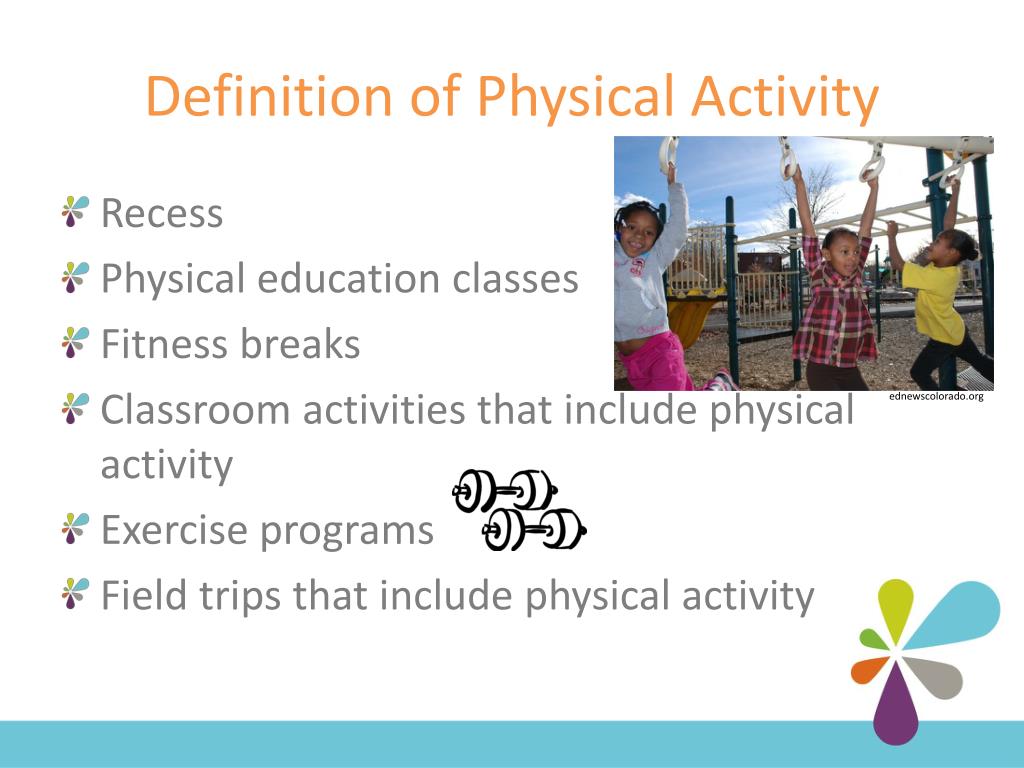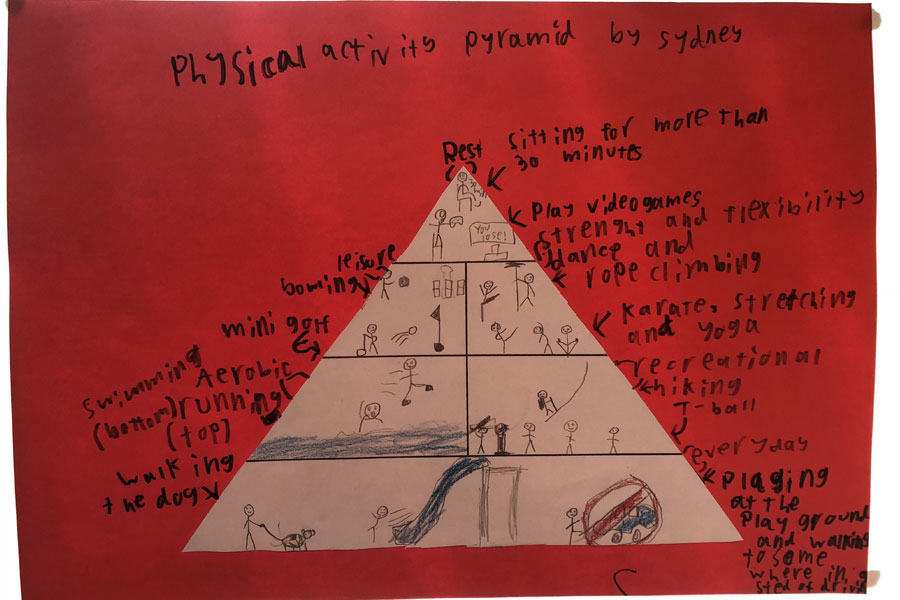
Usually ready to participate in team sports that focus on skill development, equal participation and fun.Ĭan start strength training with lighter weights and proper supervision. Physical size, strength and maturity vary widely for this age group. Other ideas: playing tag, walking to school, soccer, baseball, gymnastics, skating and skiing.Īctivities that strengthen muscle and bone at least 3 days a week.Ĭhildren reach puberty at different times.
#Define physical activity free#
Sports should have short instruction times, flexible rules, offer free time in practices, and focus on fun. Vigorous-intensity activities at least 3 days a week.Īctivities that strengthen muscle and bone at least 3 days a week. Other ideas: walking or running, playing tag, swimming (when at least 4 yrs old), tumbling, dancing, throwing and catching.Īs they grow older, they might like to try skipping and bike riding.Īt least 60 mins of moderate-to-vigorous-intensity physical activity every day, including: They should gradually progress toward at least 60 minutes of energetic play (moderate-vigorous intensity physical activity) by 5 years of age.Īctivities should be fun and encourage your toddler to explore and try new things.Ĭhildren this age don’t understand rules and often are not coordinated enough to play organized sports. Should be physically active several times daily.Īt least 30 minutes of tummy time throughout the day.Īctive play starts from birth, especially through floor-based activities including tummy-time, reaching, pushing, pulling and crawling.ġ80 mins of physical activity through the day (planned and organized and unstructured physical activity or free play).

Vigorous-intensity activities make children sweat and feel “out of breath,” so that they can only speak a few words between breaths.How much time should my children spend being active?ĭaily physical activity can include free play, games, sports, transportation (walking, cycling), recreation, and physical education. Give your child lots of time to be active in both structured activities, like organized sports, and unstructured activities, like playing in a playground.Īs teens strive for independence, they may want to do some things on their own. Encourage them to go for a walk or bike ride with friends.Choose activities that suit your child’s age and stage of development.It’s easier if families do things together as part of the daily routine. Include the whole family in regular physical activity and healthy eating. Your child learns the most about healthy active living from you. Children and teens should spend less time on these activities and more time being active. “Sedentary behaviour” means time spent doing very little physical activity, such as sitting at a computer, playing video games, or watching television. improve their mood and self-esteem, and.

lower the risk of several diseases and health problems,.keep their heart and lungs strong and healthy,.


Physical activity has benefits at every age, and helps kids: To help children develop habits that will last a lifetime, an active, healthy lifestyle must start early in life. For children and teens to grow up healthy, it’s important they are physically active and eat healthy foods every day.


 0 kommentar(er)
0 kommentar(er)
